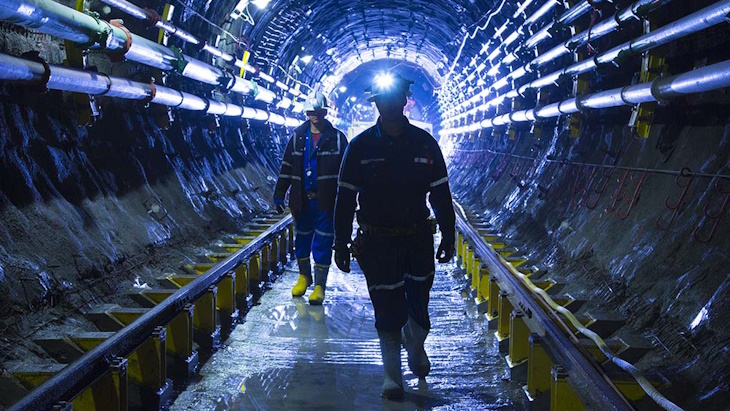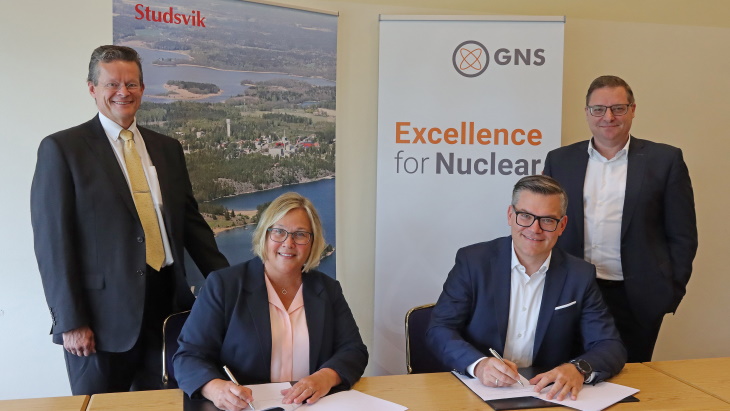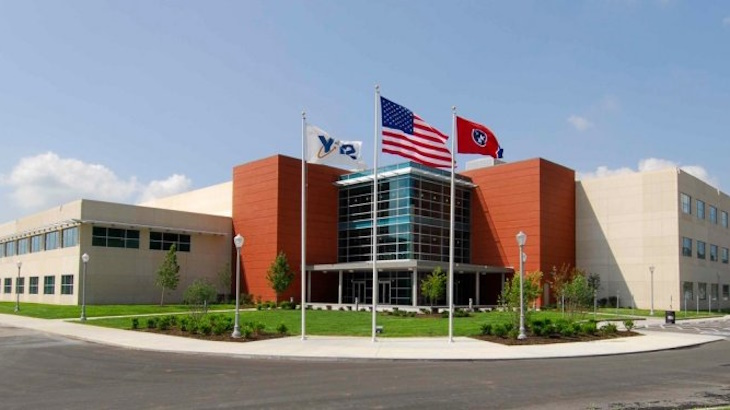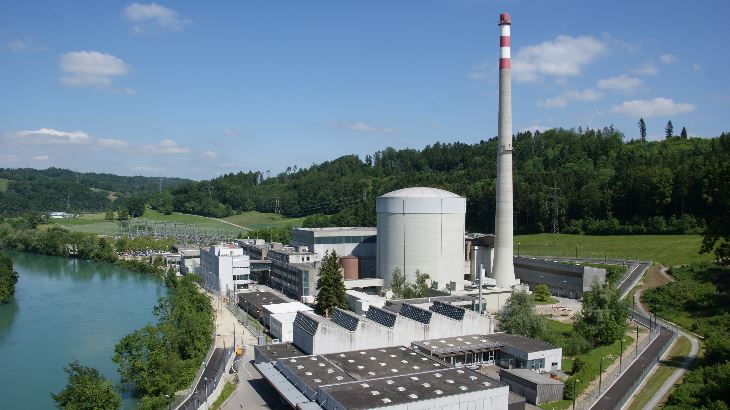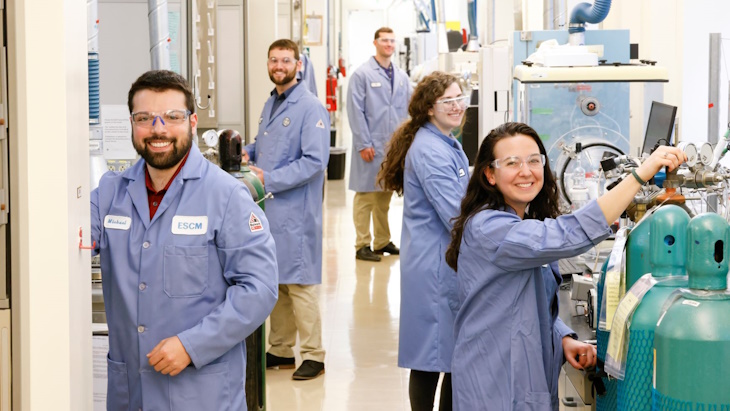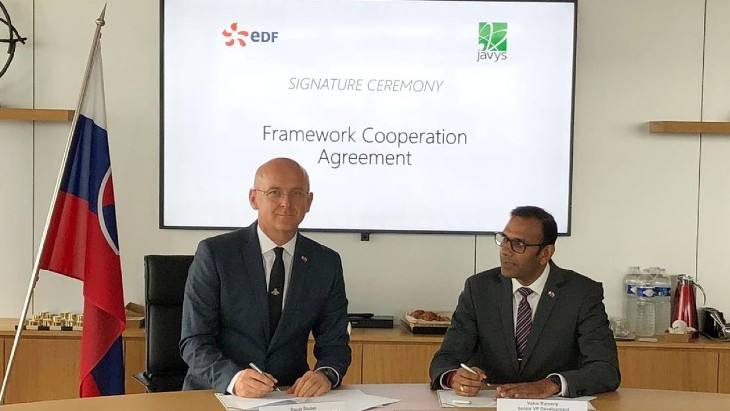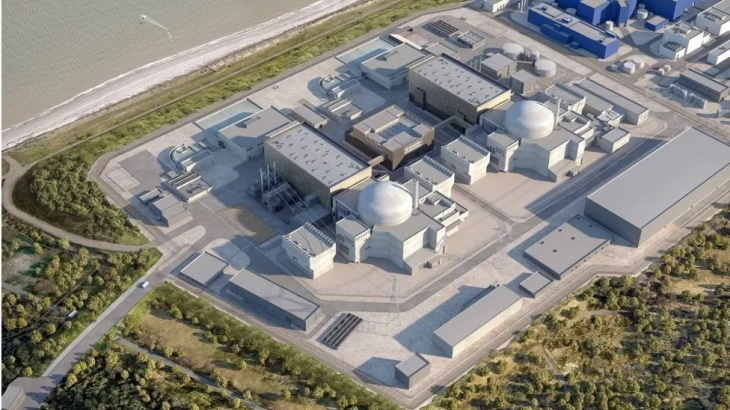Germany’s place as the leader of Europe’s anti-nuclear lobby has been further solidified as Chancellor Olaf Sholz doubled down on his view that nuclear has no place in the country’s energy mix, while Italy has vowed to speed up its integration of nuclear energy in a bid to cut costs, save the economy, and power the Green Transition.
Nuclear power is controversial as some countries have embraced it, while others have considered it more of a risk than it is worth. Its inclusion by the European Commission as a green energy source in the Taxonomy Regulation further laid bare divisions across Europe as countries bickered over whether it could truly be considered green and sustainable.
But Russia’s invasion of Ukraine, the bid to replace Russian gas with other alternatives, a need to control soaring energy costs, and big ambitions in terms of phasing out fossil fuels have led a number of countries to reassess their positions, or, in some cases, take a U-turn. However, Germany is not among them.
On Saturday, German Chancellor Olaf Scholz said they would not revive the “dead horse” of nuclear power after calls from the Liberals, part of the governing coalition, to reactivate them following the country’s recent exit from nuclear.
Germany’s last nuclear power plants, Isar 2, Emsland and Neckarwestheim 2, were shut down in April 2023 despite soaring energy prices and fears of a cold and expensive winter ahead. The government maintains that the nuclear phase-out, which started in 2000, will make the country safer as the risks of nuclear are unmanageable.
In an interview with radio station Dlf on Saturday, Scholz stressed using nuclear power in Germany’s energy mix is no longer an option.
“In Germany today, the topic of nuclear power is a dead horse,” the Social Democrat said.
“Whoever would want to build new power plants would take 15 years and would have to spend 15 to 20 billion per unit,” he added.
Scholz’s remarks come after representatives of the FDP, the chancellor’s liberal coalition partner, called to stop the dismantling of reactors that are still usable to reactivate them.
“This is the only way to remain capable of acting in any situation,” Christian Dürr, head of the FDP’s parliamentary group, told daily SZ on Thursday.
Differences about whether nuclear power should continue to be used in Germany had led to severe tensions within the coalition – especially between the FDP and the anti-nuclear Greens – at the end of last year until Scholz intervened and pushed through April 2023 as the exit date.
However, the chancellor said he does not expect another such intervention to be necessary since the facts speak for themselves.
“Nuclear power is at its end: It is not used in Germany any longer, the exit has been legally conducted,” he stressed.
Italy headed towards nuclear
However, in Italy, things could go in the opposite direction.
Transport Minister and Deputy Prime Minister Matteo Salvini announced on Sunday his intention to push the accelerator on nuclear-derived energy production, which will also comply with the green energy policies imposed by the EU, at the Ambrosetti Forum in Cernobbio.
Italy said no to nuclear power in a referendum on 8 November 1987, which led to the closure of several nuclear power plants. However, the referendum does not introduce any ban, nor is it necessary to repeat it to proceed with constructing nuclear power plants. An ordinary law outlining a national energy plan is sufficient.
Nuclear power has broad support from all centre-right parties and was mentioned during the election campaign by Lega and Antonio Tajani’s Forza Italia (EPP) and Prime Minister Giorgia Meloni’s Fratelli d’Italia (ECR).
“This will be a legislative government, and if we have worked well, I hope we will also have the next five years. Within that time, I count that this government, with the current conformation, will be able to inaugurate the first (energy) production derived from nuclear”, Salvini said.
“I believe that Italy must, within this year, restart its research and participation in nuclear power. Italy cannot call itself out of it. I count that by 2023, this government will have the strength to explain to the Italians why, in the name of technological neutrality, we cannot say no to any energy source”, explained Salvini, who also did not spare the EU heavy criticism regarding tight budget constraints on public spending.
“If Europe asks us for ambitious green goals on housing and cars with sacrifices for agriculture and fishing, it cannot put budget constraints that allow others to enter our house”, the League leader said.
Meanwhile, Environment and Energy Security Minister Gilberto Pichetto Fratin announced that, on September 21, institutions and companies will convene at the Ministry for the first meeting of the National Platform for Sustainable Nuclear Power, which will be the linking and coordinating entity between all the different national actors who in various capacities deal with nuclear energy, safety and radiation protection, and radioactive waste.
“We are committed to fusion in experimentation with several agreements at the international level, and we put the maximum attention on fourth-generation fission, which also means the evaluation of small reactors that within ten years may be an opportunity for the country”, Fratin said.
European energy quagmire
While Germany, as Europe’s most significant power, leads the way in the move against nuclear, Austria is also firmly against it. In November 2022, Vienna sued the European Commission for granting the green label to nuclear power through the EU sustainable finance taxonomy.
At the time, Green Environment Minister Leonore Gewessler said Austria would continue its anti-nuclear stance against neighbours. Meanwhile, Austria continues to rely on Russian gas, buying almost as much today as before the Ukraine war.
Last week, French President Emmanuel Macron lashed out against Germany for its stance, accusing Berlin of deliberately countering the growing acceptance of it in Europe.
“It would be a historic mistake to […] slow down investment in nuclear power […] in Europe”, especially if this ends up favouring “more coal,” asserted Macron, likely triggering Scholz’s clear message this weekend.
France is also a key player in the Nuclear Alliance and has been clear that “french nuclear power is non-negotiable and will never be negotiable.”
Belgium recently halted the phase-out scheduled for completion by 2025 due to legal challenges and Russia’s invasion of Ukraine. Belgium chose to postpone the closing of two reactors by 10 years, and whether these shutdowns will go ahead at all remains to be seen.
In other parts of Europe, nuclear power is a crucial part of the energy mix, and governments show no sign of wanting to phase out. For example, Bulgaria, Czechia, Slovakia, Slovenia, and Croatia all have active nuclear reactors that garner a significant chunk of national energy. Governments there have little motivation to phase out the energy and are mainly considering expanding their capacities.
In non-EU member states, Albania, following a meeting between Prime Minister Edi Rama and Meloni, is reportedly looking at collaboration on nuclear power. The topic has been raised several times in the country following its transition to democracy in 1991, but no firm plans have been made.
Serbia and Kosovo do not currently have any nuclear plants, and there are no plans to construct any in the near future. However, in 2022, Serbia’s Deputy Prime Minister Zorana Mihajlovic said Serbia needs plants to meet its renewable energy goals.
At the other end of the spectrum, Spain and Portugal, both with socialist governments, remain firmly against nuclear energy. However, a change of government in Madrid could see the country´s nuclear plants’ life prolongated.
While Portugal relies on hydropower, Spain continues to import Russian gas, seeing a two-fold increase in volume in May this year.
With Germany’s latest declaration and Italy’s accelerated plans to reactivate, Europe could soon find itself drawn with member states picking sides on nuclear and reliance on fossil fuels, particularly Russian gas.
